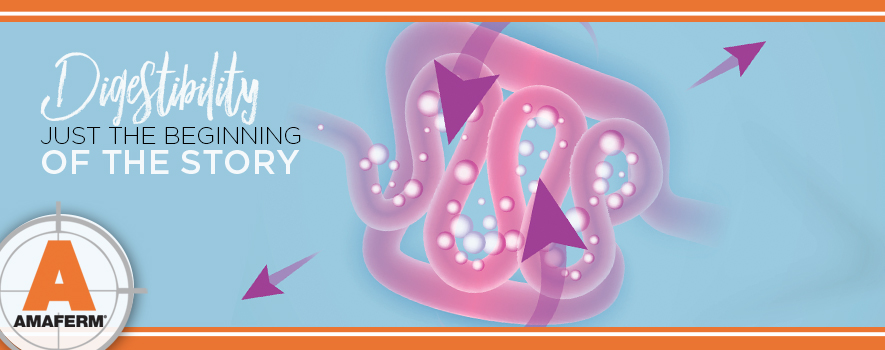
You’ve probably heard a lot about digestion and its importance to animal health. But what about absorption? If digestibility is good, do you need to worry about absorption?
The answer is yes! While good digestion is required to break the nutrients from feed into molecules small enough for the animal to absorb, consuming and digesting feed is not the end of the story. The animal still needs to be able to absorb molecules into the bloodstream and put them to use for energy, growth and repair. The amount of a nutrient that actually gets absorbed into the animal’s bloodstream varies greatly between different animals and different nutrients. On the lower end of the spectrum, the absorption of some essential nutrients, such as calcium, is less than 30%, leaving the majority of that nutrient unusable by the animal¹.
There are two types of absorption that occur in the intestine – passive diffusion or transport and active transport. Passive transport is a simple process that moves molecules across the intestine using a gradient. That is, molecules move from an area of high concentration (in the intestine) to an area of low concentration (in circulating blood). Active transport, on the other hand, is a more complex process that requires metabolic energy to be expended for the molecule to move across the membrane. Interestingly, while digestion differs greatly between ruminants and non-ruminants, these general mechanisms for absorption of molecules are largely the same across species.
The total absorption of nutrients by the animal is affected by many factors, including stress, the need for and source of a particular nutrient and overall gut health. Research on the ability of feed additives to increase absorption has been limited and, in many instances, it is impossible to separate the effect of increased digestion from a possible improvement in absorption. One way to accurately determine absorptive capacity is by a Ussing chamber, which can detect and quantify transport and barrier functions of living tissue. Ussing chamber experiments with Amaferm®, BioZyme®’s precision prebiotic, have demonstrated up to a 30% increase in absorptive capacity².
Improvement in absorptive capacity can be further quantified into both active and passive transport by using active transport inhibitors like phlorizin in Ussing chamber experiments³. This shuts down the means of active transport, allowing researchers to determine if differences in overall absorption are primarily due to active or passive transport. The benefit to enhancing passive transport over active transport is it does not require energy. It is a cheap, easy way for the animal to absorb nutrients! Using these methods Amaferm has shown improvement in absorption by enhancing the passive transport of molecules from the gut into the bloodstream, giving the animal more nutrients to use without expending any additional energy.
Combined with Amaferm’s ability to improve feed intake and enhance digestibility by stimulating both the fungi and the bacteria in the gut, this increase in absorption of nutrients is key to maximizing overall animal health and performance.
- J.H Harrison and H.R. Conrad, J. of Dairy Sci., Vol. 67, No. 8, pg. 1860–1864.
- Ipharraguerre et al., Christian-Albrechts Univ., Kiel, Germany, 2016.
- J. Ehrenkranz et al., D. Metabolism Reseach and Rev., Vol. 21, No. 1, pg. 31–38.
